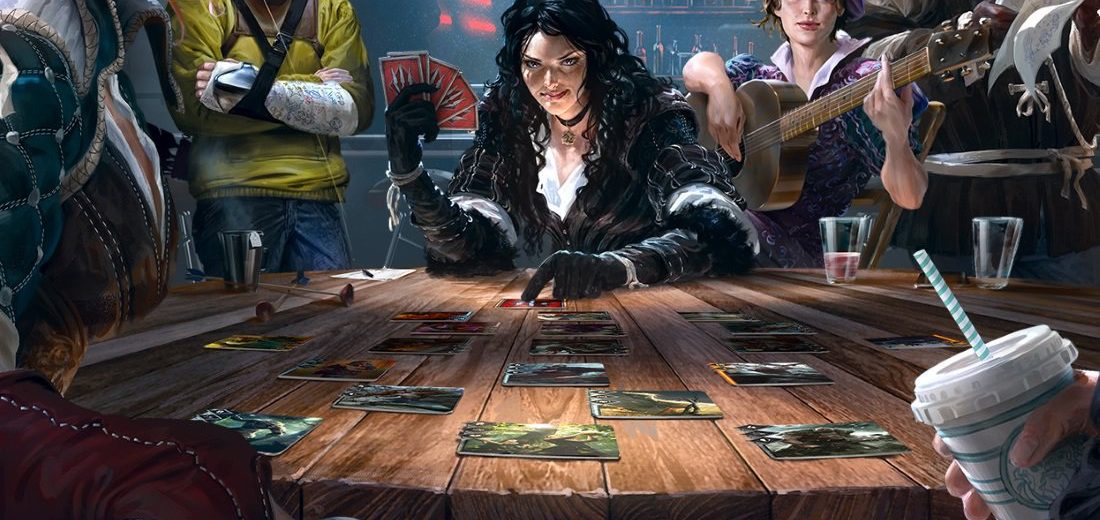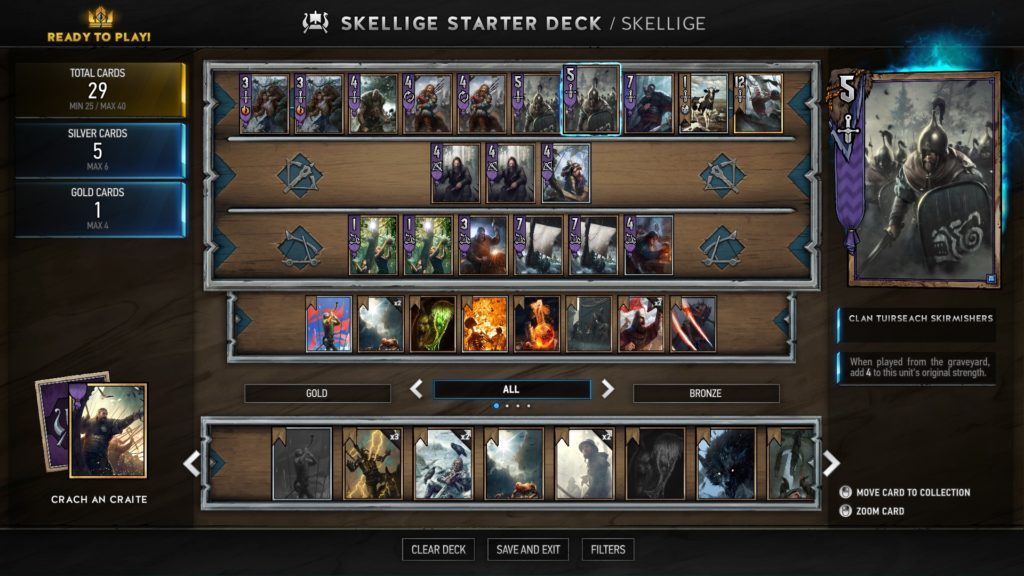Table of Contents
When The Witcher 3: Wild Hunt was released in 2015, players were blown away by how much developer CD Projekt RED had packed into the game. Not only is there a seemingly endless amount of quests to complete, but there is also a whole other game within the game: Gwent. Playable throughout The Witcher 3, Gwent is an in-universe collectible card game that is so fully featured that players wondered why it wasn’t available as a standalone product. CD Projekt RED listened to their fans, and now, over a year later, the standalone version of Gwent: The Witcher Card Game is in closed beta.
Digital card games have never been more prevalent, with The Elder Scrolls: Legends in open beta and the massively popular Hearthstone getting bigger every year. So chances are, if you’re interested in playing Gwent, you likely have some experience with digital card games already. Many people get bored of playing the same card game year after year and get excited at the opportunity to try something new, meaning you’re not alone if you’re a Hearthstone player looking to jump ship.
This article is a guide to Gwent for players who are coming from Hearthstone. While Gwent is still based around cards, it works very differently from most CCGs, so much so that your knowledge of Hearthstone might actually be a detriment instead of a benefit.
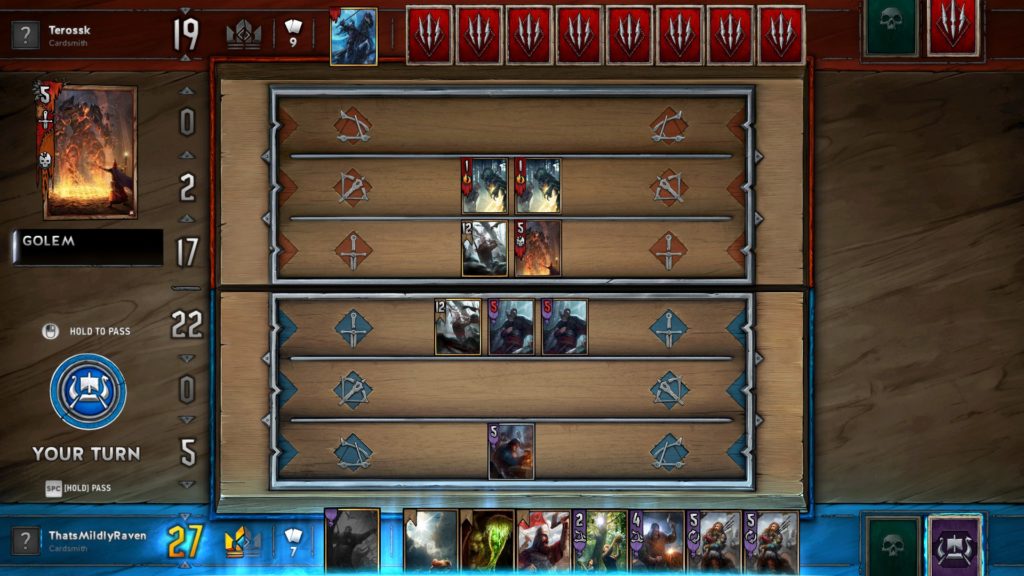
Basic Rules
In Hearthstone, the goal is bring your opponent’s life total to zero before they do the same to you. In Gwent, there are no life totals, and instead each player has a Strength total that begins at zero. Rather than attacking your enemy to reduce their number, you play cards to increase your number, and the player with the highest number at the end of the round wins. It is also played in a best of three format, with means that you can lose the first round but still come out on top by winning the next two.
The biggest differences in the basic rules are that you can only play one card per turn, and cards have no resource costs — you can play any card on any turn. In Hearthstone, it is often the case that you want to play multiple cards per turn in order to give your opponent a tough situation to deal with. But in Gwent this isn’t possible, which means every single play must be very purposeful.
You will never have a situation where you are have to play a specific card on your first turn because there is nothing else you can play. Since you can always play any card, you have think very far ahead, and be sure that you won’t need that card later.
This is especially important since you do not draw a new hand of cards between rounds. In fact, you rarely draw cards at all in Gwent. You start the match with 10 cards, drawing two more after round one, and one more after round two. Any cards you don’t play will stay in your hand for the next round. This means that if you play all your cards in the first round, you’re only going to have two cards in the second round, and you’ll have no hope of getting a higher Strength total than your opponent.
This can lead to interesting tactics, such as playing a single card with high Strength in the first round that requires your opponent to play several cards to overcome it, and then conceding the round so that you have a card advantage in the following rounds, making it easier for you to win. It’s a bit of a gamble, but strategies like this are necessary to win in Gwent. In Hearthstone you can out-pace your opponent and kill them before they can deal with your cards, but every match of Gwent is a long one, and the entire match must be considered.
The Board
The game board is similar to Hearthstone’s in that there are two sides, one for your cards and one for your opponent’s cards. But in Gwent each side is divided into three rows: Melee in the front, Ranged in the middle, and Siege in the back. Most cards have a designated row that they must be must be placed into, but some can be placed anywhere. This makes card choice and placement much more important than it is in Hearthstone, since there are cards that can have effects on entire rows. Play too many Ranged cards and your opponent might play a Fog card, reducing the Strength of all cards in both Ranged rows.
You have to try to diversify your card types while still making sure you’re adding enough Strength, which can be a tough balancing act. It also opens opportunities for bluffing. Weather cards reduce the Strength of all cards in a particular row, and it’s to your advantage to try to make your opponent think that you don’t have one in your hand.
Even if it seems like it would be good to use one in the first round, keep in mind how likely you are to win that round anyway. It might be better for you to let your opponent continue dumping their cards into one row, making them think you don’t have a weather card to deal with it. Then in the later rounds when they think it’s safe to do the same thing, you can spring your trap on them.
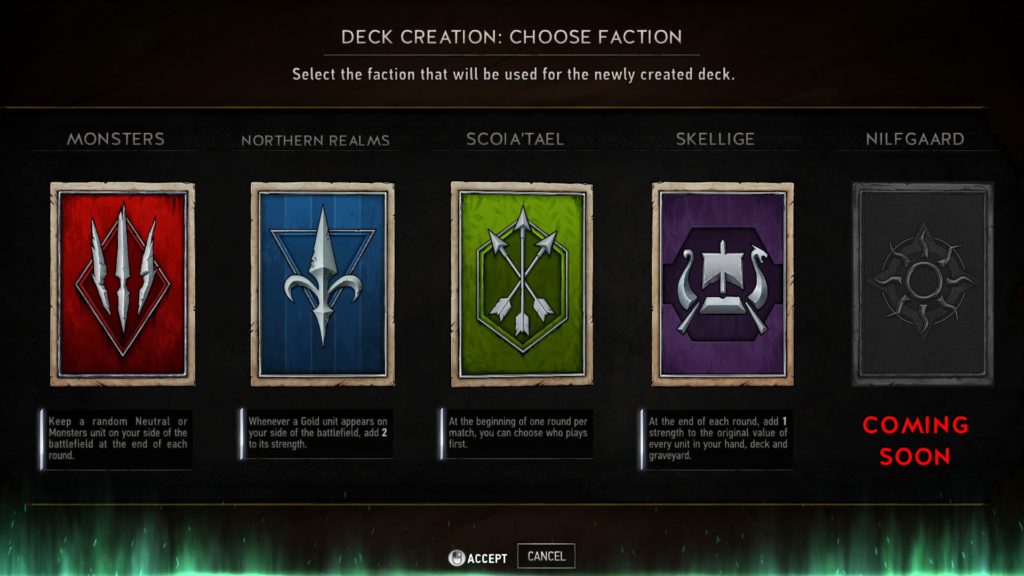
Factions
Gwent currently has four factions to choose from when building a deck: The Northern Realms, Skellige, Monsters, and Scoia’tael. Similar to heroes in Hearthstone, each faction has cards that are exclusive to it (in addition to the neutral cards that can be added to any deck), and different factions are better suited for different styles of play. Monsters, for example, work best when playing a lot of lower Strength cards, because they have abilities that can duplicate them and benefit from the number of cards on the board.
Each faction also has a leader that has two abilities, one passive and one that can be activated once per match. Since the activated powers can only be used once, they are much more powerful than hero powers in Hearthstone, and can often turn the tide of a match. This makes it very important to carefully consider when to use your leader’s power, because once it’s gone, it’s gone, and you don’t want to waste it on a round you will likely lose anyways.
Each faction also has multiple leaders that you can choose from, allowing you to pick one with abilities that best suit your playstyle.
The Graveyard
When a card is removed in Gwent (either because the round ended or because of another card’s special ability) it is not completely out of the game. Instead it goes into your Graveyard, and certain cards or leader abilities will be able to put cards in either player’s Graveyard back into your hand or even straight onto the board, sometimes with a higher Strength value.
In Hearthstone, for the most part, when a card is gone you don’t need to worry about it anymore. There are some cards that will bring back a dead minion, but they are always chosen at random, which means you can’t do much about it.
In Gwent, you need to always be aware of what is in your Graveyard as well as your opponent’s. You can look through the Graveyard at any time, and you should do so often, because there might be something in there that could help you out. Or, you might want to do whatever you can to keep something good out of the Graveyard, since your opponent could take advantage of it.
Deck Construction
Hearthstone decks must have 30 cards in them, and you can’t have more than two of any card (or one if it’s a legendary). In Gwent, decks have a minimum size and a maximum size. You can have anywhere from 25 to 40 cards in your deck. Since you won’t be drawing a lot of cards throughout the game, you a very unlikely to use more than 25 cards in a single match. This means that the only reason to add more cards to your deck is to give yourself more options.
When starting out, however, it’s a better idea to keep your deck size small, to have more consistency in the cards you draw. This will make it more similar to how deck construction in Hearthstone works, where you’re trying to execute on a specific strategy and only want to include cards that help you execute it. Once you’re more comfortable with the game and have memorized more of the card’s abilities, you’ll do better at playing with a larger deck.
Progression and Earning New Cards
The way you get new cards in the standalone version of Gwent has had to change quite a bit from the version in the Witcher 3. You no longer earn cards for defeating your opponents, but instead you have to purchase them. Just like Hearthstone, Gwent is a free-to-play game with microtransactions for purchasing booster packs which give you a random assortment of cards. Also similar to Hearthstone, you can purchase card packs with in-game currency, called ore, which you earn for winning games.
Each pack — or keg, as they are referred to in Gwent — contains five cards, with at least one card of Epic rarity or higher (card rarities include Common, Rare, Epic, and Legendary, in order of increasing rarity). These cards will either be characters or creatures of some sort which increase your Strength total, or spells that don’t add strength but instead have a powerful effect. One interesting thing Gwent does is let you choose the most valuable card that you get in a keg. When it comes time flip over your new Epic card, you are presented with not one, but three of them, and you get to choose the one you would like to add to your collection. This makes it a bit easier to build a certain type of deck, as you can choose the card best suited for what you’re going for.
Currently in the closed beta there is no ranked leaderboard. Instead there is a leveling system where winning games grants you experience and levels up your account. The first few levels only take three wins to progress through, but as you reach higher levels it will take more wins to hit the next one. Each time you win a game you get a little bit of currency, and when you level up you get enough to purchase a keg of cards.
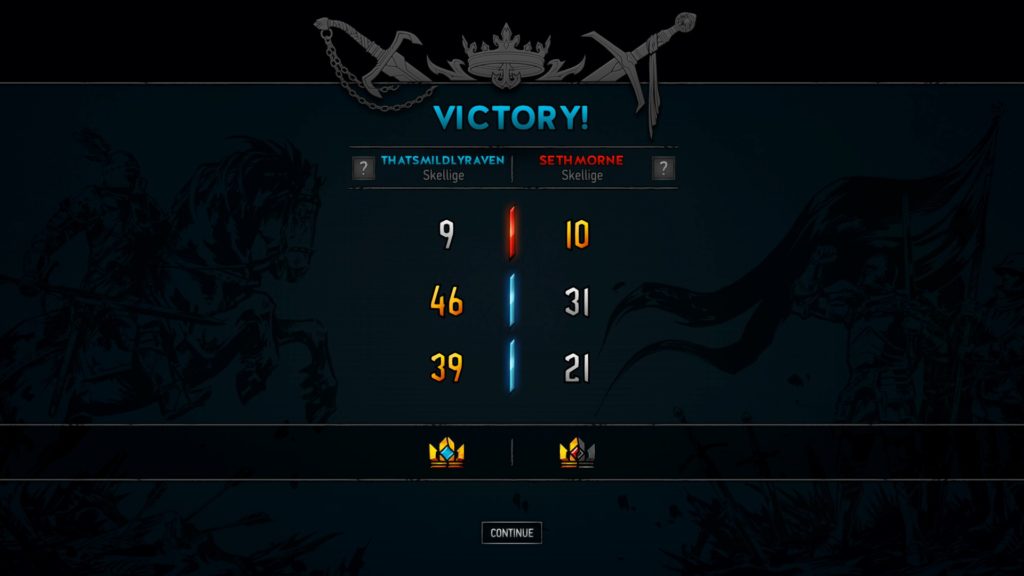
Above All Else…
Remember that card advantage is better than board advantage! Hearthstone is all about controlling the board, while in Gwent each round will reset the board but not the cards in your hand, and without cards you can’t win. This will be the biggest hurdle for most Hearthstone players when trying Gwent for the first time. Restraint is important; just because you can play a card doesn’t mean you should play a card. Play slowly, think about how your choices in round one will affect rounds two and three, and you’ll do just fine.


